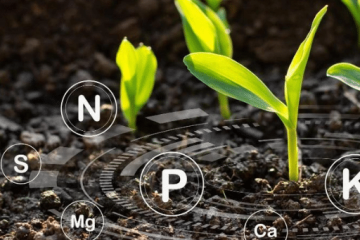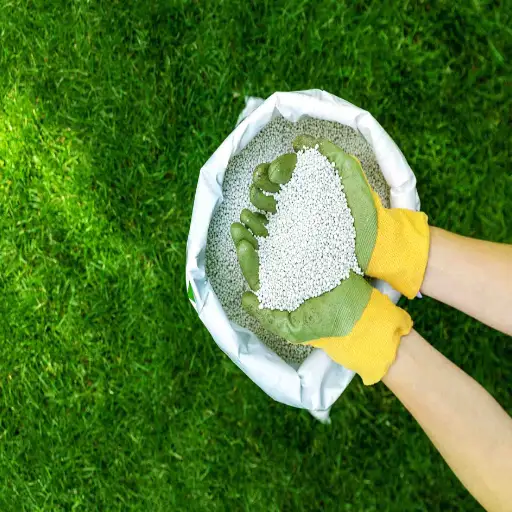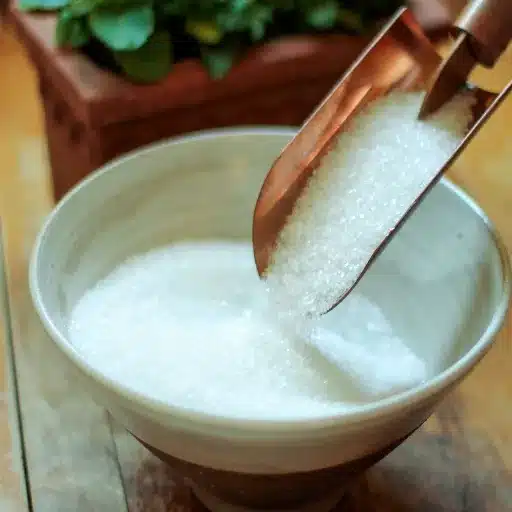Maintaining a lush, healthy lawn requires more than just regular watering and mowing—it demands the right nutrients to thrive. Urea lawn fertilizer is one of the most effective tools in achieving this goal, offering a highly concentrated source of nitrogen to promote vigorous grass growth and vibrant greenery. But how does it work, and why is it such a popular choice among lawn care professionals and homeowners alike? In this guide, we’ll explore everything you need to know about urea fertilizer, from its chemical composition to its benefits, application methods, and environmental impact. Whether you’re a seasoned groundskeeper or a homeowner looking to enhance your lawn, this article will equip you with the knowledge to make informed decisions and keep your lawn in peak condition.
Understanding Urea Fertilizer
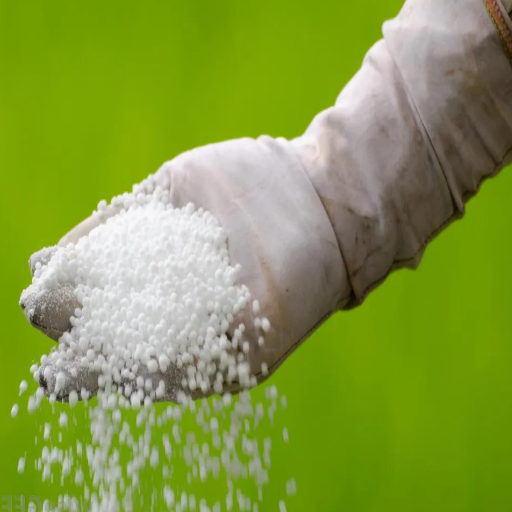
What is Urea Fertilizer?
In agriculture and lawn care, urea has become a widely used nitrogen-based fertilizer, synthetic in nature, and extremely concentrated. Being 46 percent nitrogen, it is among the best and most economically viable nitrogen sources with which one may enrich the soil. Urea is industrially synthesized using ammonia and carbon dioxide under intense energy conditions to make a white granular product that dissolves readily in water.
The major benefit of urea fertilizer is its nitrogen delivery efficiency to the plants, which is required to promote vigorous growth and enhance chlorophyll production. Since nitrogen is among the most important nutrients in the processes of photosynthesis and protein synthesis, it is an excellent choice to keep a lawn, crop, or ornamental plant healthy with urea application. Urea will treat soils of varying kinds, and there are numerous ways of application, such as broadcast spreading or incorporation into the soil.
This means the product must be kept well, since volatilization—a process of nitrogen being lost to the atmosphere as an ammonia gas—can occur. To minimize this loss and maximize absorption into the soil, applying urea when the soil is wet and when temperatures are moderate is best, or one could incorporate the urea into the soil not long after application. This way, plants enjoy the full benefit of nitrogen for their growth and health.
Composition and Nitrogen Content
Urea, with 46% nitrogen by weight, is considered a concentrated nitrogenous fertilizer, placing it at the apex in nitrogen concentrations among the usual list of solid fertilizers. This very concentration of nitrogen makes urea a cost-effective nutrient source for agricultural, horticultural, and industrial applications. The two amide groups present in the chemical formula CO(NH₂)₂ undergo hydrolysis in soil, converting the nitrogen into forms accessible for plant use under the action of the urease enzyme.
In the soil environment, urea decomposition through chemical reactions is commonly known as ammonification. Initially, hydrolysis converts urea into ammonium carbonate, which dissociates to ammonium (NH₄⁺) and carbonate ions. The ammonium ion is key to plant-available nitrogen. However, in high pH environments or very shallow soil incorporation, ammonium may be lost to the atmosphere by volatilization as ammonia gas, hence decreasing nitrogen availability. Thus, proper application of urea should be stressed to conserve nitrogen.
Given that urea has both a very high N content and high solubility, dry and liquid fertilizers are often formulated from it. It is efficient and relatively cheap, which makes urea very popular in commercial agricultural systems where a large scale of production is involved. Conversely, to draw maximum advantages of nitrogen, environmental and soil conditions like temperature, moisture, and pH must be well-regulated. Such conditions enable good handling and application of urea fertilizers, improving uptake efficiency and reducing environmental hazards posed by nitrogen emissions and leaching.
Types of Urea Fertilizer: Focus on 46-0-0
With urea fertilizer, the “46-0-0” designation means it contains 46% nitrogen (N), 0% phosphorus (P), and 0% potassium (K) by weight. Its distinctively high nitrogen content makes 46-0-0 one of the most efficient and commonly used nitrogen fertilizers in agricultural pursuits. It is shaped into either granules or prills, which helps in the easy application of the fertilizer; hence, it can also be spread fairly evenly in the fields. Nitrogen fertilizer is very soluble and hence suited to many methods of fertilization, like mixing with other fertilizers, broadcasting, or topdressing.
Other than vegetative growth enhancement by the nitrogen content of 46-0-0 urea fertilizer, crops such as cereals, maize, and others very responsive to nitrogen do well with it; however, because of the effect that can also lead to volatilization or leaching of nitrogen from the fertilizer, it has to be very well managed so that the soil can retain moisture and be neutral in the pH level for nitrogen to be made more available to the crop. In most cases, farmers mix the urea into the soil right after application or make use of urease inhibitors to reduce nitrogen loss.
Environmental hazards do exist, though, when 46-0-0 is mishandled. Unnecessary nitrogen emissions caused indirectly by the fertilizer, such as ammonia volatilization and nitrous oxide release, pollute the air and water. It is for this reason that the correct regime of application must be observed, whereby the degree of fertilizer use is kept precise, the late timing of fertilizer spreading coincides with requirements by the crops, and surface application is not carried out in hot or dry conditions to optimize it while saving the environment.
Benefits of Urea Fertilizer for Lawn Care
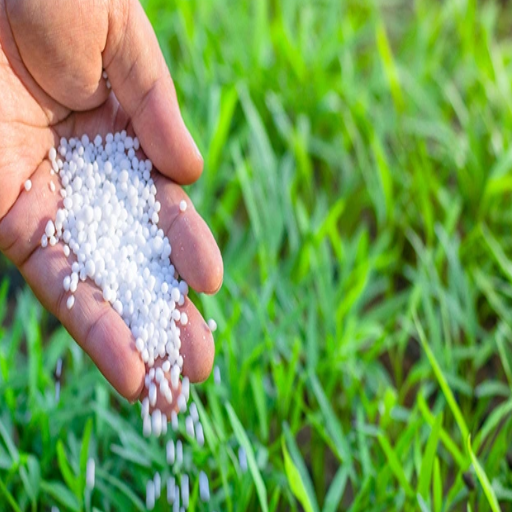
Why Choose Urea for Lawn Health?
Urea fertilizer is the most efficient and popular nitrogen source to maintain the health of lawns. It contains 46% nitrogen by weight, thus entrusting it to become a high-level concentration of nitrogen that brings nutrients into the soil. This increases the vigor of the growth of grasses, deep green color in appearance, and greater photosynthetic activity.
The versatility of urea fertilizer for different soil types and climates is among its greatest advantages, so the results of its application are consistent under various environmental conditions. Another property attributed to it is water solubility; therefore, if a urea fertilizer is correctly applied, it will quickly be absorbed by the grass roots. Moreover, this property also makes it available for use in both granular and liquid forms, depending on how it is required to be applied to the lawn.
Recent developments of urease inhibitors and controlled release formulations have increased the efficiency of urea fertilizer, which prevents nitrogen loss due to volatilization or leaching. Such newer formulations of urea are hence environmentally sustainable and equally cost-effective to the homeowner and landscaper. Application of the knowledge of how urea is used in a lawn care schedule will therefore give users the desired results with minimal environmental damage.
Affordability and Availability
Urea is widespread across the globe and is considered an affordable fertilizer, thus making it preferential in farming, commercial, and residential settings. Urea is manufactured using an ammonia and carbon dioxide synthesis procedure, which keeps production costs low and positions the product very competitively. It is one of the few nitrogen fertilizers that guarantees the highest nitrogen content per unit, which is even higher than any of the other nitrogen fertilizers, such as ammonium nitrate or calcium ammonium nitrate (generally 46%). The higher the content, the lower the volume required for application and the lower the transportation costs, thus making it cheaper in the various markets.
The other vital factor behind the popularity of urea is that it is widely available. Production capacities across the world have grown appreciably advanced by the chemical industry and are strategically based with producing plants in important areas. Urea enters almost every agricultural supply chain and is stocked either in granular or prilled form to facilitate transportation, storage, and direct application.
Another thing that has improved price-wise and availability-wise is the availability of enhanced formulations, including urea with urease inhibitor or controlled-release urea. Such products do tend to be a bit pricier upfront, yet in the long run, they pay off because of the reduced environmental impact and increased nitrogen use efficiency, making them a feasible and sustainable option for large agricultural ventures as well as some smaller operations, such as the care of a few residential lawns. Being able to obtain these products gives the users a chance to get the best results while also promoting worldwide efforts to use fertilizers in a sustainable way.
Quick Nitrogen Release: How It Works
Water-soluble nitrogen in fertilizers was composed mostly of urea or ammonium nitrate, substances that dissolve fast in soils in water. Upon incorporation, these substances chemically decompose in the soil’s moisture with further microbial conversion, yielding nitrogen mainly in the ammonium (NH4+) and nitrate (NO3-) form that is immediately absorbed in large quantities by the roots of plants. Immediate nutrient availability ensures rapid growth of plants, along with remedying any deficiency state.
However, the efficacy of quick-release fertilizers is governed by environmental factors like soil pH, temperature, and moisture levels. High temperature and excessive rainfall lead to nitrogen loss by leaching and volatilization. Nitrogen loss can be as high as 50% of the applied nitrogen in unfavourable conditions, stressing the need for correct application methods that will enhance retention and uptake, according to agronomic studies.
Taken from the data, a rapid availability of nutrients is offered by these quick fertilizers; thus, they can be used in applications where time is of the essence, during critical growth stages of crops as time-dependent fertilizers, or for reviving stressed vegetation. Hence, the application should be controlled to avoid harmful effects such as contamination of groundwater and production of greenhouse gases, with the realization of both agronomic and environmental efficiency.
How to Apply Urea Fertilizer
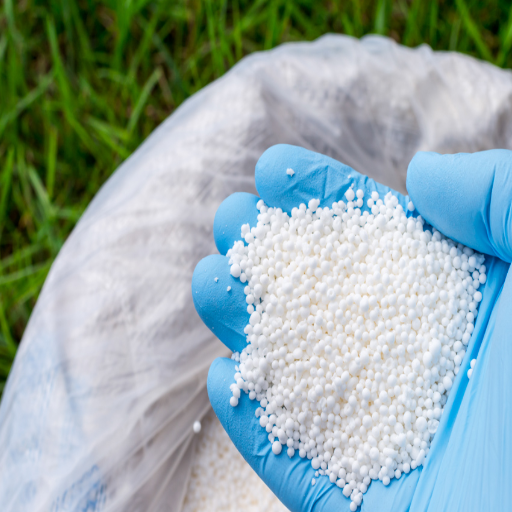
Ideal Timing for Application
The optimal timing of the application of urea fertilizer is an important issue for crop uptake and environmental loss. Urea should ideally be applied before sowing or in early crop growth stages, such as vegetative phases, during which the plants absorb nitrogen efficiently for biomass development. Soil conditions may also impact timing- applying urea with soil temperatures below 50°F(10°C) almost always means less nitrogen loss due to volatilization. The sooner the urea gets incorporated into the soil after application, either by tillage or irrigation, the better, as this reduces its exposure to air.
Avoid applying urea fertilizer when high rainfall or irrigation events contribute to water runoff, as this may lead to the bad consequence of nitrogen leaching into waterways. Also, application timing must factor in the demand for whatever crop is being grown. For instance, with cereals such as wheat or rice, applying part of the fertilizer at planting and another part at the tillering stage has proven to yield the highest nitrogen use efficiency. For maize, side-dressing of urea application from V4 to V6 growth stages (four- to six-leaf stage) similarly enhances nitrogen uptake.
By way of combining sensors and predictive weather data, farmers can identify instantaneous views of when crops show nil nitrogen. Using nitrogen uptake models and canopy reflectance-based technologies can optimize fertilizer timing schedules, facilitate efficient use of urea, and diminish its impact on the ecosystem. Fusion of scientific rationale and real-time data-oriented insight stimulates sustainable agriculture while delivering on yield objectives.
Recommended Amounts for Effective Use
Determining the proper nitrogen application rates is an approach that involves looking at the soil, crop, and environment. For cereal yield targets and low soil testing levels, various studies and crop recommendations have suggested 70 to about 150 pounds per acre of nitrogen application. During the growing season, changes could be made with precision tools such as chlorophyll meters or remote sensing technologies to increase plant uptake and decrease runoff.
Split application of nitrogen means applying nitrogen at different stages through the growing season instead of a single application. When performed properly, this strategy can greatly improve nitrogen use efficiency (NUE) and minimize leaching. The application of 60% of nitrogen at planting and 40% later at the important growth stages, such as tillering or flowering, synchronizes nutrient availability with crop demand.
Another very important factor is soil organic matter level and residual nitrogen. On fields having a high organic matter content, the farmer can reduce synthetic nitrogen applications since mineralization will naturally release nitrogen from the organic matter. Nitrate testing should be one of the tools used to complement these assessments that provide information for making decisions at every step.
The adoption of these practices in association with cutting-edge monitoring systems provides an optimal solution to the need for determining nitrogen application rates, thereby bidding the industrialized agricultural setting goodbye.
Potential Drawbacks of Using Urea Fertilizer
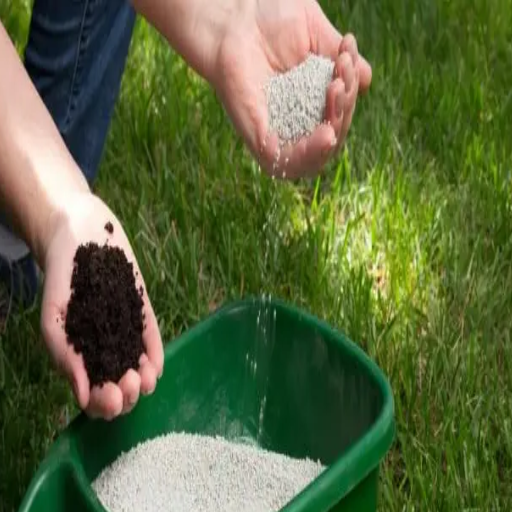
Risks of Overapplication and Burn
In my point of view, the overapplication of urea fertilizer poses serious hazards that may directly cause deterioration in soil health and crop yield. The main concern is that urea has a very high nitrogen content, and if applied in excess, it can result in fertilizer burn. This occurs when excess nitrogen draws moisture from the plant roots, “burning” the plants with visible symptomatic manifestations such as discoloration of the leaves and wilting. These conditions basically hinder growth and may even result in permanent crop losses, especially for the sensitive ones.
Furthermore, it leads to an imbalance in soil nutrient conditions. High levels of nitrogen prevent the uptake of other essential nutrients, such as potassium and magnesium, thus leading to nutrient deficiencies and adversely affecting good plant health. This soil imbalance reduces in due course the soil quality and its ability to sustain healthy agricultural cycles; hence, if left untreated, overapplication of urea becomes another deteriorating factor for the soil, compromising long-term farm productivity.
To reduce the problems associated with such soils, the application of urea must be done with utmost finesse regarding rates and methods. In this context, newer technologies such as soil testing kits and nitrogen monitoring systems can be included in regular farming operations so that before any application, there is a reasonably precise assessment of the nutrient requirements of the soil. By employing data-driven decision making in conjunction with sound farming practices, risk management associated with urea overapplication can be done effectively, maintaining crop health as well as environmental sustainability.
Environmental Concerns: Runoff Issues
Excessive use of fertilizers like urea has profound implications for water quality, mainly via agricultural runoff. When nutrients are applied more than the crops or microbes can absorb, these extra nutrients get washed away by rain or by irrigation water. The runoff carries nitrogen and phosphorus into nearby water bodies, thus leading to eutrophication. Eutrophication then causes an algal bloom that reduces the amount of oxygen in the water. These hypoxia, commonly referred to as “dead zones,” are extremely harmful to aquatic ecosystems and, in turn, threaten fish populations, biodiversity, and the general health of aquatic environments.
A further aggravation of this problem is due to the interfacing of water systems. For example, nutrient runoff from farmlands in streams and rivers contributes additional nutrients to lakes and coastal waters. One of the biggest examples is the hypoxic zone in the Gulf of Mexico that is formed by the runoff from the entire Mississippi River basin consistently. According to the EPA, this hypoxic zone spans thousands of square miles annually, marking the necessity for the mitigation of agricultural contributions to water pollution as a very critical issue.
An integrated approach that includes precision agriculture, monitoring technologies, and BMPs is required to address the issue of runoff. Vegetative buffer strips from surface drainage, cover cropping, and reduction in nutrient application rates are ways to minimize nutrient loss from agricultural lands. Further, more advanced monitoring systems with the aid of satellite imagery and IoT sensors will be able to deliver nutrient level information and forecast likely runoff events. Through a combination of these technologies and regulatory frameworks, the agricultural sector can mitigate its environmental impact, thus securing food security and environmental sustainability.
Mitigation Strategies for Safe Use
Ensuring safe nutrient and chemical applications in agriculture demands an integrated approach speckled with scientific rigor, cutting-edge technology, and data-driven practices. Critical to the minimization of nutrient waste in the environment is precision agriculture, in which various inputs are applied according to exact crop and soil requirements. This is perhaps the most important method in minimizing nutrient wastage in the environment while maximizing crop yield.
Buffer strips and constructed wetlands serve as good biofilters. They trap nutrients before they become pollutants in water. As eutrophication proceeds, the interference of such biofilters is crucial. Regulatory measures include the use of nutrient management plans (NMPs) to ensure compliance and to help farmers apply fertilizers and nutrients in environmentally safe amounts at the right time.
Decision-making tools based on artificial intelligence, along with the real-time analysis of soil health, are yet other technologies that increase precision management in agriculture. The data obtained from IoT soil sensors can be run in conjunction with advanced weather forecast platforms that then predict the optimum application window, thereby avoiding nutrient losses through runoff during heavy rainfalls.
Ultimately, success is a mix of education, policy enforcement, and unceasing professional and technological development. Linking these can go a long way in having environmental risks mitigated by the agricultural industry while food production systems become sustainable.
Best Practices for Lawn Care with Urea Fertilizer
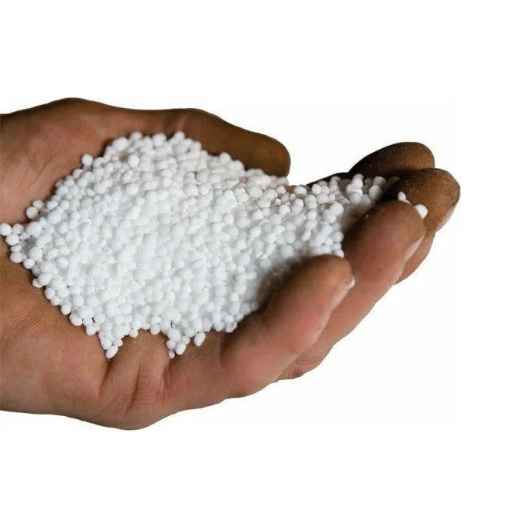
Watering Practices Post-Application
Proper watering after urea fertilizer application is essential in ensuring the absorption of nutrients efficiently while minimizing nitrogen volatilization or runoff. Here are five detailed best practices for watering after fertilizer application:
- Immediate Light Irrigation: Irrigate lightly (0.25-0.5 inches of water) just immediately after the urea fertilizer has been applied. This fine irrigation dissolves the granules on the surface and pushes them into the topsoil, which reduces nitrogen loss to the atmosphere through volatilization.
- Avoid Heavy Watering: Avoid situations where heavy irrigation (more than an inch of water) follows immediate application. These huge quantities of water can cause nutrients to run off or leach the urea deeper beyond the root zone, becoming an environmental hazard.
- Timing in Opposition to Rain: Urea fertilizer should be applied when no rainfall is being forecasted to occur during the next 24-48 hours. This ensures regulated soil moisture, whereby irrigation is applied in a controlled manner instead of relying on nature’s random help through inconsistent or heavy rainwater.
- Match watering with Soil Type: Vary the amount of irrigation by the soil type. Sandy soils need shorter but frequent doses of water to keep nitrogen within the root zone, whereas clayey or loamy soils may tolerate moderate irrigation that is infrequent due to their better water retention.
- Optimum Soil Moisture Levels: Soil on application should be neither too dry nor too saturated. Moderately moist soil strengthens nutrient absorption capacity, whereas dry soil would result in granules being washed away, and overly wet soil could cause granules to sit dormant on the surface.
Such practices ensure a maximum advantage to urea fertilizer while protecting it from being wasted or causing environmental hazards.
Soil Preparation Techniques
Proper soil preparation is a necessary base to increase soil fertility and promote optimal plant growth. With the implementation of advanced soil preparation techniques, nutrient availability and water uptake can be greatly enhanced.
- Tillage: Tillage is considered one of the fundamental methods of improving soil aeration and structure. In conventional tillage, the top layers of soil are plowed and mixed to break compaction and allow for root and water penetration. Conservation tillage, on the other hand, strives to retain soil organic matter and minimize erosion with little or no disturbance to the soil.
- Organic Matter Incorporation: Incorporation of organic matter like compost, animal manure, or green manure greatly improves nutrient content and boosts microbial activity in the soil. It has been shown that soils enriched with organic carbon retain approximately 20% more moisture, hence increasing drought resistance and lowering irrigation needs. Regular incorporation of these materials will also help improve soil structure through increased aggregate stability.
- pH Adjustment: Adjusting soil pH also remains a vital step in soil preparation. For example, liming acidic soils raises pH and increases the availability of phosphorus and calcium to the plants. To lower the pH, sulfur may be added to alkaline soils. These adjustments should be made accurately by assessing the soil pH with a pH meter to decide whether corrections are required, depending on species-specific requirements.
- Drainage and Aeration Enhancement: Consider amending the soil with coarse materials (e.g., sand, perlite) in areas where drainage is a problem to allow better movement of water through the profile. Also, cover crops such as radishes may assist in breaking through compacted layers, further enhancing aeration and subsurface drainage over time.
In the above-described ways, the blending of old and new methods of soil preparation helps in building a sustainable environment that ensures maximum agricultural productivity.
Integrating Urea with Other Fertilizers
Integrating urea with other fertilizers requires comprehensive insight into chemical interactions between nutrients, soil properties, and plant needs to realize the utmost synergy of effects. Urea happens to be a highly concentrated nitrogenous fertilizer that is versatile but prone to volatilization losses when applied at the surface, mainly under alkaline or high-temperature conditions. To reduce losses of nitrogen, urea should be incorporated into the soil or should be used along with stabilizers like urease inhibitors that slow down the conversion of urea into ammonia gas.
When mixed with phosphorus fertilizers like diammonium phosphate (DAP) or monoammonium phosphate (MAP), the timing and placement of application must be considered to avoid nutrient lockout brought about by chemical incompatibility in certain soils. A well-practised approach is one in which urea is banded away from the other granular fertilizers to improve availability and uptake efficiency. Regarding potassium-type fertilizers, the simultaneous application of urea serves no downside interaction; however, keeping track of chloride-sensitive crops might be necessary.
Precision agriculture makes it more efficient to procure urea and other fertilizers using technologies such as variable-rate application (VRA). Using field-specific data, such as soil nutrient maps and crop yield targets, allows growers to tailor nutrient blends to meet specific agronomic needs. Also, based on green chemistry, slow and controlled-release formulations of urea could be applied in conjunction with other fertilizers to supply nutrients gradually and consistently, thereby reducing environmental risk and enhancing crop performance overall. Farmers would profit by increasing nutrient efficiency while reducing wastage and environmental pollution.
References
Frequently Asked Questions (FAQ)
Q: What is urea lawn fertilizer?
A: Urea lawn fertilizer is a high-nitrogen fertilizer that provides essential nutrients to grass, promoting healthy growth and a lush green lawn. It typically contains a high percentage of nitrogen, making it an effective choice for enhancing turf health.
Q: How do I apply urea fertilizer to my lawn?
A: To apply urea fertilizer, it’s best to spread the fertilizer evenly across the lawn using a broadcast spreader. This ensures that the nutrients are distributed uniformly, allowing for optimal absorption and growth.
Q: What is the nitrogen content of 46-0-0 urea fertilizer?
A: The nitrogen content of 46-0-0 urea fertilizer is 46%, meaning that each pound of fertilizer contains one pound of nitrogen. This high nitrogen content makes it an efficient source for promoting grass growth.
Q: When is the best time to apply urea on lawns?
A: The best times to apply urea on lawns are during the cooler parts of the day, such as early morning or late afternoon. This helps prevent urea burn and allows for better absorption into the soil.
Q: Can I store urea fertilizer?
A: Yes, you can store urea fertilizer in a cool, dry place. It is important to keep it away from moisture to prevent it from clumping or dissolving prematurely.
Q: What are the benefits of urea as a nitrogen source?
A: Urea is an excellent nitrogen source for lawns because it is water-soluble and can be quickly absorbed by the grass roots. It helps to improve soil fertility and promotes a healthy, green lawn.
Q: How often should I apply urea fertilizer to my lawn?
A: The application rate of urea fertilizer can vary based on lawn size and specific lawn needs, but generally, it is recommended to apply every 4-6 weeks during the growing season to maintain optimal nitrogen levels.
Q: Is liquid urea fertilizer as effective as granular urea?
A: Both liquid urea fertilizer and granular urea are effective in providing nitrogen to the lawn. Liquid forms can dissolve quickly and may be absorbed faster, while granular forms release nutrients gradually.
Q: What happens if I overapply urea fertilizer?
A: Over-application of urea fertilizer can lead to urea burn, which damages grass and can result in yellowing or browning patches on the lawn. It’s crucial to follow recommended application rates to avoid this issue.


